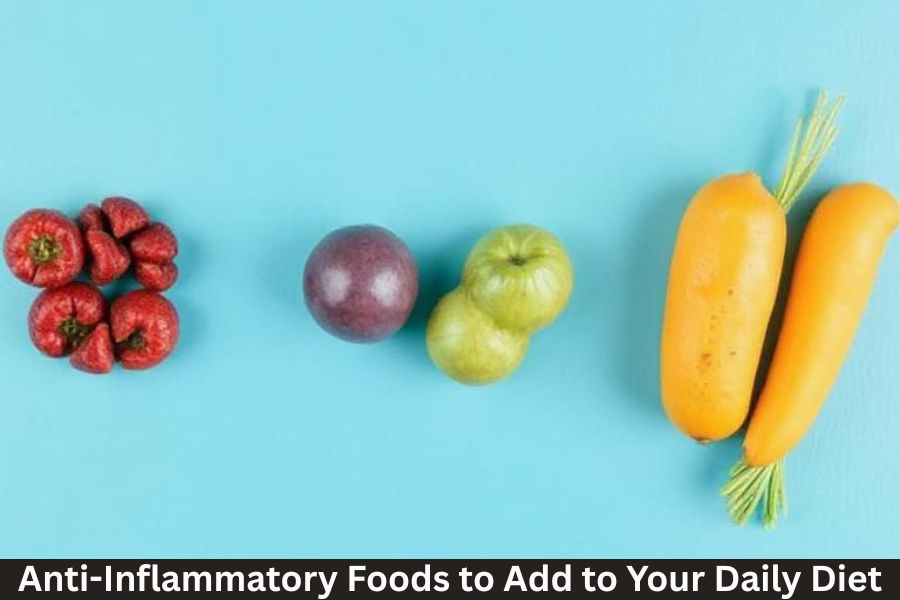In today’s fast-paced world, our bodies face constant stress—from pollution and poor sleep to processed foods and chronic health conditions. One common response your body may have to these stressors is inflammation. While short-term inflammation is a natural healing process, chronic inflammation can lead to serious health issues like heart disease, diabetes, arthritis, and even cancer.
The good news? You can fight inflammation naturally—starting with your plate. This guide covers the best anti-inflammatory foods to add to your daily diet and why they matter for your long-term wellness.
What Is Inflammation?
Inflammation is your immune system’s response to injury, infection, or irritants. It helps your body heal. But when inflammation becomes chronic due to poor lifestyle choices, it damages healthy cells and tissues, increasing your risk of disease.
Why Focus on Anti-Inflammatory Foods?
Just as some foods promote inflammation (like refined sugars, fried foods, and trans fats), others help fight it. These anti-inflammatory foods are rich in antioxidants, fiber, healthy fats, and essential nutrients that help calm the body’s internal fire.
Top Anti-Inflammatory Foods for Everyday Eating
Here’s a curated list of powerful inflammation-fighting foods you can easily incorporate into your daily meals:
1. Berries
- Examples: Blueberries, strawberries, raspberries, blackberries
- Why They Help: Berries are rich in antioxidants, particularly anthocyanins, which reduce oxidative stress and inflammation.
- How to Eat: Add to smoothies, yogurt, oatmeal, or snack on them fresh.
2. Fatty Fish
- Examples: Salmon, mackerel, sardines, tuna
- Why They Help: Packed with omega-3 fatty acids (EPA and DHA) that lower inflammatory markers in the body.
- How to Eat: Grill or bake with herbs, or add to salads and bowls.
3. Leafy Greens
- Examples: Spinach, kale, collard greens, arugula
- Why They Help: High in vitamins A, C, K, and polyphenols that fight inflammation.
- How to Eat: Sauté, blend into smoothies, or use as a salad base.
4. Garlic and Onions
- Why They Help: Both are high in sulfur compounds and quercetin, which exhibit strong anti-inflammatory effects.
- How to Eat: Use in stir-fries, soups, dressings, or roasted dishes.
5. Whole Grains
- Examples: Quinoa, brown rice, oats, barley
- Why They Help: Rich in fiber, which promotes a healthy gut microbiome—a key player in reducing systemic inflammation.
- How to Eat: Replace refined grains with whole versions in meals.
6. Green Tea
- Why It Helps: Contains EGCG (epigallocatechin gallate), a powerful antioxidant with proven anti-inflammatory benefits.
- How to Drink: Replace coffee with green tea in the morning or afternoon.
7. Avocados
- Why They Help: Packed with monounsaturated fats, fiber, and carotenoids that combat inflammation.
- How to Eat: Spread on toast, add to salads, or blend into smoothies.
8. Citrus Fruits
- Examples: Oranges, lemons, limes, grapefruits
- Why They Help: High in vitamin C, which supports immune function and fights cellular inflammation.
- How to Eat: Enjoy fresh, juiced, or in fruit salads.
9. Nuts and Seeds
- Examples: Walnuts, almonds, chia seeds, flaxseeds
- Why They Help: Rich in omega-3s, fiber, and antioxidants that lower inflammation.
- How to Eat: Snack on them, add to oatmeal or salads.
10. Extra Virgin Olive Oil
- Why It Helps: Contains oleocanthal, which has anti-inflammatory effects similar to ibuprofen.
- How to Eat: Use as your main cooking or salad oil.
Foods to Avoid (Inflammatory Triggers)
To truly benefit from anti-inflammatory foods, limit:
- Refined sugars and sodas
- Processed meats
- Deep-fried foods
- Refined carbs (white bread, pastries)
- Trans fats (found in packaged snacks)
Tips to Build an Anti-Inflammatory Diet
- Eat the rainbow – more colors = more phytonutrients
- Plan ahead – prep meals using anti-inflammatory staples
- Stay hydrated – water helps flush out toxins
- Add dark chocolate – yes, in moderation, it’s anti-inflammatory too!
Sample One-Day Anti-Inflammatory Meal Plan
Breakfast: Oatmeal topped with berries, walnuts, and a sprinkle of chia seeds
Lunch: Quinoa bowl with grilled salmon, kale, avocado, and olive oil dressing
Snack: Green tea + a handful of almonds
Dinner: Stir-fried veggies with tofu and brown rice, seasoned with garlic and turmeric
Dessert: A square of dark chocolate and orange slices
FAQs
Q1: How quickly can I see results from an anti-inflammatory diet?
Many people notice reduced bloating, improved energy, and better digestion within a week. Long-term benefits include reduced risk of chronic disease.
Q2: Can anti-inflammatory foods help with arthritis?
Yes, they can help reduce joint pain and stiffness by lowering inflammation levels.
Q3: Are supplements as effective as whole foods?
Whole foods are always better due to synergistic nutrients, but supplements may help if advised by a healthcare provider.
Q4: Is the Mediterranean diet anti-inflammatory?
Yes! It’s one of the most researched anti-inflammatory eating patterns.
Q5: Are all dairy and meat products inflammatory?
Not all. Grass-fed, organic versions in moderation may not trigger inflammation in everyone.



